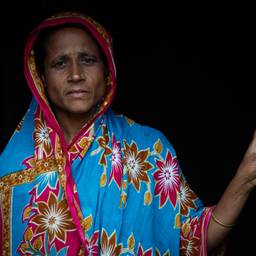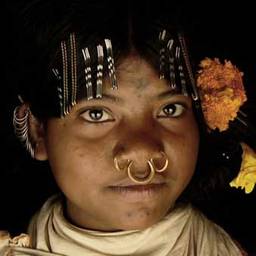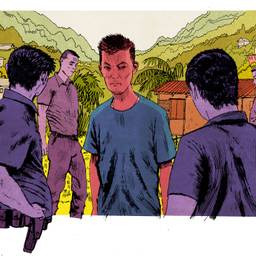The Treacherous Paths Out of Modi's India
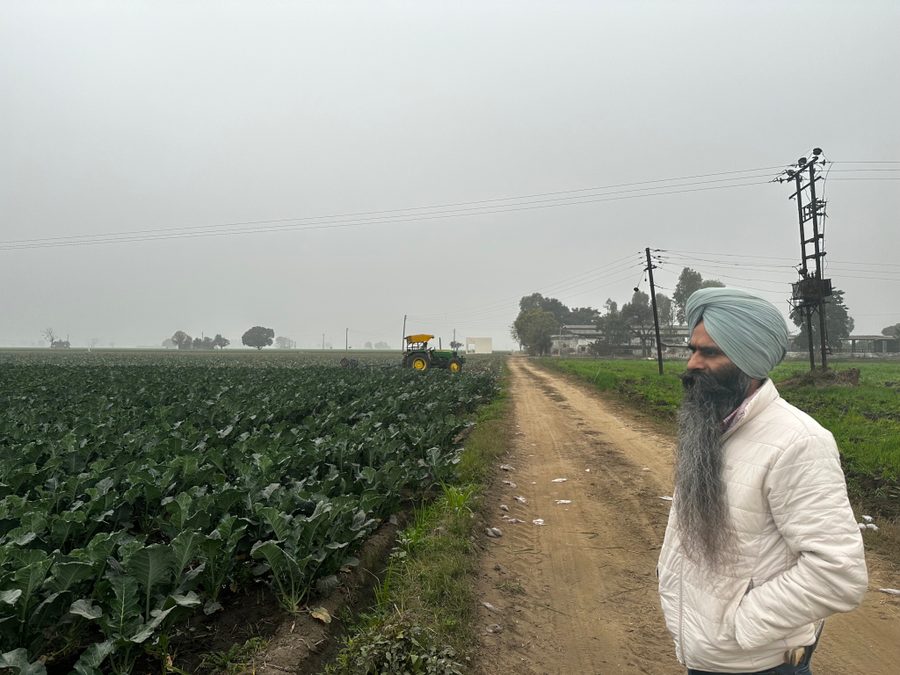
Satnam Singh (no relation), a Punjabi activist involved in India’s farmer protests, says that the growing unsustainability of farming due to climate change, oppressive government regulations, scarce jobs and political persecution are all “driving people from farming to the dunki route.” Photo by Makepeace Sitlhou
The last thing Sukhwinder Singh remembered was crossing through knee-deep water near the U.S.-Mexico border wall in Arizona. When he finally awoke, he learned that his passage to the land of opportunity had cost him an arm and both legs.
One morning in March 2023, Sukhwinder Singh woke up in the Valleywise Medical Center in Phoenix, Arizona, shocked to see his brother and a friend by his bedside. This meant Singh — a 42-year-old Sikh migrant from Punjab, India — had made it to the United States. But he soon realized that his arrival had come at a terrible price.
The last thing Singh remembered was crossing through knee-deep water near the U.S.-Mexico border wall in Arizona. As he tried to keep pace with the coyotes and other migrants, he passed out. Within 24 hours, U.S. Border Patrol agents found him near the Yuma crossing and brought him to a local hospital. A week later, he was transported to Phoenix for further treatment, where he remained in a coma for a month and a half. When he finally awoke, he learned that his passage to the land of opportunity had cost him an arm and both legs.
According to his doctors, Singh (who asked not to use his real name for fear of political backlash in case he is deported back to India) had gone into septic shock caused by a bacterial infection on his right foot — likely contracted in a hotel pool in Mexico, waiting for the next stage of his journey: a two-day drive inside an insulated, rickety truck packed with migrants, heading towards the border.
A few days before Singh was found, another Indian migrant — a 32-year-old man from Gujarat — fell while scaling the 30-foot border wall in Tijuana with his three-year-old son in his arms. The boy survived with minor injuries; his father did not.
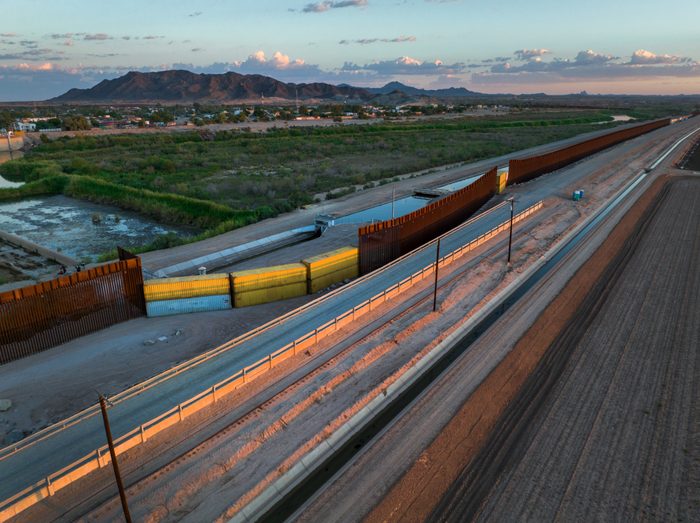
In 2022, the U.S. Customs and Border Protection agency saw a record high of 63,927 Indian migrants apprehended at the southern border, more than double the number from 2021. In 2023, the number increased again, to 96,917 migrants, accounting for 3% of all migrant crossings there.
Mass Indian migration has become so widespread that migrants have coined the term “dunkis” to describe their rapidly growing numbers. The term originates from a Punjabi idiom meaning to hop from one place to another and the English word “donkey,” both referencing the long walks immigrants undertake. The trend is so notable that in 2023 a Bollywood movie featuring one of India’s top stars used the term as its title.
But the reasons for this rapid increase are far more serious than what the movie portrayed. According to U.S. Citizenship and Immigration Services (USCIS) data, in 2022 India became the third leading country of origin for successful defensive asylum seekers, after China and El Salvador, where many migrants have fled political and religious repression and gang-related instability, respectively.
However, while the Biden administration takes note of the repressive or unstable conditions in countries like these (or in Ukraine, Russia and Haiti) it has neglected the increasing hostility towards minorities in India, evidenced by both its asylum policies — Indian political and religious asylum seekers are often dismissed as “economic migrants” and frequently face longer and more arduous asylum application processes — and continuing diplomatic ties with Prime Minister Narendra Modi of the ruling Hindu nationalist Bharatiya Janata Party (BJP), who was just elected for a third term this June. Unlike migrants from El Salvador or Haiti, Indians are not eligible for Temporary Protected Status, which continues to be in effect despite the June 4 order barring migrants crossing the Southern border “unlawfully” from seeking asylum.
Under the BJP and Modi, India has been downgraded by multiple international watchdog groups, such as the Global Democracy Index and Freedom House, which have labeled the country a “flawed democracy,” an “electoral autocracy” and only “partially free.”
State repression has worsened dramatically for some government critics and religious minorities, with Muslims and Christians roundly targeted. Besides using fringe Hindutva groups to attack religious and ethnic minorities, Modi’s government has led campaigns demonizing Muslims and passed laws to disenfranchise, evict and detain them on the grounds that longstanding Muslim citizens are in fact “illegal immigrants.” Indian Christians have also been persecuted, including by being subjected to forced conversions by Hindu Right groups.
Less attention has been paid to India’s Sikhs, an economically affluent community that represents less than 2% of India’s population overall but make up the majority of the northwestern state of Punjab, which borders Pakistan. And some anecdotal evidence suggests that Indians seeking asylum in the United States appear to be disproportionately from Punjab, compared to other states like Gujarat and Haryana, with Punjabi now the most widely spoken South Asian language in U.S. immigration courts. That’s partly because Sikhs’ comparative wealth makes it easier for them to emigrate than other Indians. But it’s also because many Sikh Punjabis have been vocal opponents of Modi’s government, leading recent farmers’ protests against the BJP’s corporate-friendly agricultural “reforms” and, in some cases, opposing Hindu nationalist attacks on religious and ethnic minorities.
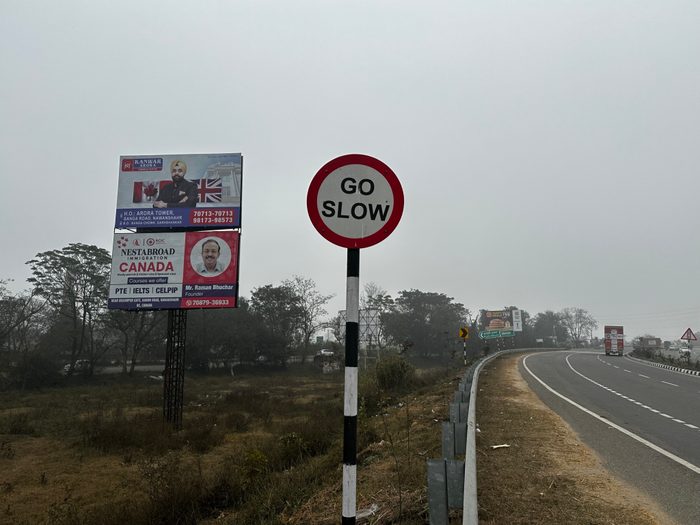
Sukhwinder Singh is among that number. A mechanical engineer by profession, Singh hadn’t wanted to leave India but says he was forced to due to “religious persecution” as a “Khalistani” — the name of an armed Sikh separatist movement that began in the 1980s to advocate for a sovereign Sikh state carved out of Indian and Pakistani land. Although militancy was suppressed by brutal counterinsurgency measures in the late ’90s, various political groups continue to advocate for Sikh self-determination through peaceful means.
Today, decades later, some Sikhs living abroad embrace the name Khalistani to describe their support for self-determination. But within India, the term is tantamount to calling someone a terrorist, and Sikhs who dissent from Modi’s government are often smeared with the label to discredit their advocacy or political participation.
When Punjabi Sikhs rose up as a mass movement against Modi’s corporate-friendly farm laws in September 2020, the government cast them as “anti-national” separatists. On social media, violent calls were made to “repeat” 1984, when ethnic targeting of Sikhs led to a widespread massacre that left thousands dead. As the U.S. State Department’s report on International Religious Freedom has found, Sikhs have also been targeted by Hindu nationalist groups for refusing to donate to the construction of a new Hindu temple and for offering worship space to Muslims.
Since 2022, I have interviewed several Indian asylum seekers — in the United States and in India, successful and not — who undertook long and dangerous journeys to reach the U.S.-Mexico border, involving chartered flights, unscrupulous facilitators, questionable visas and risks to their health and safety. What they’ve been willing to face to seek asylum paints a troubling picture of backsliding in the world’s largest democracy and some of its under-recognized victims.
The fact that, more recently, Indian migration is also increasing even from states like Gujarat — a northwestern province Modi governed for three terms, and which is often cited as a model of his success — demonstrates the gaping cracks in India’s positioning as a democratic economy on the rise.
Unlike most undocumented immigrants escaping gang violence in Central America or civil war in African countries, many Indian migrants flee religious and political persecution. To reach U.S. soil, they pay thousands of dollars to a well-connected network of smugglers operating in India, Europe and Latin America.
Low-cost airlines play a crucial role in the “dunki” route, ferrying passengers to countries with lax visa rules. In December, a Nicaragua-bound flight with more than 300 Indian passengers was intercepted in France on suspicion of human trafficking. Passengers reportedly had paid anywhere from $48,000 to $150,000, hoping to eventually reach the United States.
One young man on the flight told me he’d already paid $12,000 to an “agent” from his village for two previous, failed attempts to emigrate, but had tried again, with the expectation that he would have to pay $160 to acquire a visa in Nicaragua and another $6,000 upon reaching the United States.
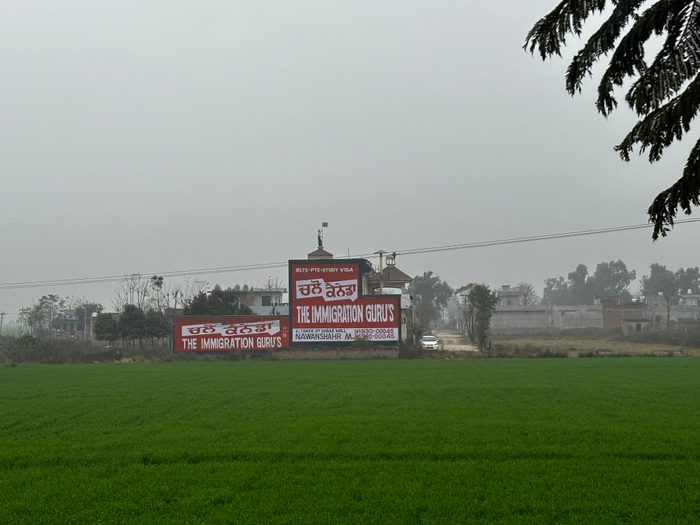
In Punjab, the term “agent” is used loosely to refer to travel agencies, many of which operate illegal immigration services. According to the Migration Policy Institute, some agencies operate legally but use questionable methods, while others are embedded in criminal networks. Agents charge high fees for flights, visas, lodging and smuggling costs.
Had the Nicaragua-bound flight not been intercepted, the passengers would likely have traveled through the dangerous Darién Gap, a 60-mile jungle route between Colombia and Panama, and ultimately on to Mexico. Instead, the young man I spoke to was deported back to India, along with 275 other passengers. The agent who arranged the journey is currently under investigation by the Punjab state police.
For Punjab’s youth, the exorbitant fees agents charge are seen as an investment in a better future. Singh’s journey, for example, was made possible by an intricate network of friends, family and Punjabis already living abroad. The cost came to a total of close to $50,000, which Singh needs to repay.
One unlicensed “agent” who sent his own brother to Spain explained, “He has no life other than work to pay off his loan.”
In January, I traveled to Punjab, where a bitter winter fog enveloped vast stretches of paddy, sugarcane and mustard fields. Numerous houses, especially the lavish new homes built by Indian families living abroad, stood vacant: a ghostly status symbol of success. Along the state’s highways and country roads, billboards, posters and hand-painted advertisements for study abroad visas were ubiquitous. Some residences boasted statues of bald eagles while one water tank was topped with a commercial airplane — all symbols of pride for families who had relatives living overseas and sending money home.
Kuljit Hayer, an executive member of the Punjab Travel Agents Association, said that Punjab’s outbound migration started from the eastern part of the state, in part because of economic reasons — agricultural land is scarcer there than elsewhere in Punjab — but taking off in the 1980s when the Sikh separatist independence movement arose. As separatists took up arms in hopes of creating the independent state of Khalistan, the government responded with a fierce crackdown. Throughout its counterterrorism campaign, thousands of civilians accused of aiding Khalistani separatists were killed or disappeared.
In 1984, Indira Gandhi, India’s first and only female prime minister, ordered the military to storm the Golden Temple in Amritsar — one of the holiest Sikh sites in Punjab — to apprehend the separatist leader Jarnail Singh Bhindranwale, who was taking shelter there. To avenge the storming of the temple and the killing of several worshippers that day, Gandhi was killed by her two Sikh bodyguards, sparking targeted violence in which thousands of Sikhs — estimates range from the government’s official tally of nearly 3,000 to as high as 30,000 — were massacred in North Indian cities.
After the massacre and widespread arrests, Sikh families like the Sodhis felt unsafe remaining in India. And so, many left, including Rana Singh Sodhi, who was only 19 when he emigrated in 1985, becoming the first member of his family to do so.
“Who wants to leave their homeland if you’re happy and secure? When I came, I used to cry, wondering when I’ll meet my parents,” said Sodhi, now 60 and living in Phoenix, Arizona.
“Parents themselves wanted to send their young sons out of Punjab and out of the country so they wouldn’t get caught in it,” said Hayer.
These early migrations provided both a successful model to follow, and the beginnings of a network of neighbors and relatives abroad who could provide support, both for those who might follow in their footsteps and those who stayed behind. Today, this network keeps Punjab’s eastern Doaba Belt wealthy despite its smaller share of farmland. (Overall, India receives the highest inward remittances worldwide at $89 billion in 2021-22, with nearly a quarter of that money coming from the United States.)
A former asylum officer said that around the 1990s, Sikh asylum claims peaked in the San Francisco office. “What I found was that all of the cases involved poor farmers who were apolitical and caught between the government and separatist groups like the Khalistan Commandos,” he said. Asylum seekers claimed they were targeted solely because of their religion and country conditions assessed by the asylum officers confirmed this.
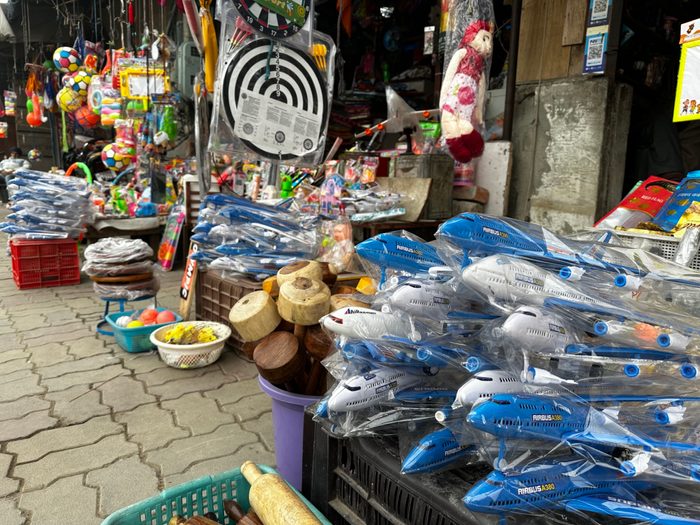
Part of today’s “dunki” phenomenon traces back to those tumultuous years. Journalist Aditya Menon, who has extensively covered Punjab politics, said there’s a prevailing sense of despondency among Sikh youth, feeling they lack control over their state or future. “Among many factors, there’s also intergenerational trauma from what happened in the ’80s and ’90s,” he explained.
The passenger from the thwarted Nicaragua flight passenger told me that, although he had faced no immediate threat, he always felt insecure living in Punjab given the mysterious death of his grandfather in the late ’90s: He went out one evening for a stroll and never returned. The next day, the police brought his body, saying that he was killed by Khalistani militants.
More recently, these tensions have returned to haunt a new generation, as the Modi government has invoked the Khalistan movement as a scapegoat for contemporary dissent.
In 2020, a year after Modi and the BJP were reelected, the Indian government rushed three farm and commodity “reform” bills through parliament, favoring private companies over farmers, threatening the Minimum Support Price system (a guaranteed price at which the government purchases crops to protect farmers against market fluctuations) and putting small and marginal farmers at risk of bankruptcy. The latter threat loomed large as at least 112,000 Indian farmers have committed suicide since Modi took office.
The new laws sparked nationwide protests, led largely by Punjabi farmers, particularly from the Sikh community. The Modi government responded by labeling the protesters “Khalistani” separatists backed by Pakistan. At least 700 protestors died over a year of demonstrations, and many more were arrested and detained, including more than 200 Sikh activists and protesters.
Ultimately, in November 2021, Modi repealed the laws after the protests drew international attention. Despite the farmers’ success, the political situation in Punjab worsened. When two prominent faces of the movement died in early 2022 — Punjabi actor-singer Deep Sidhu in a car accident and Punjabi singer Sidhu Moose Wala in a shooting — conspiracy theories spread among many protesters that the state had been involved.
In March 2023, a statewide manhunt was launched in Punjab to locate political dissident Amritpal Singh, a 31-year-old Sikh activist whom Modi’s government declared a Khalistani separatist after he and his followers stormed a police station to demand the release of a fellow dissident. Amid the month-long search, nearly 100 of Amritpal Singh’s followers were arrested before he was ultimately taken into custody as well.
On the other side of the world, Sukhwinder Singh, still lying in a Phoenix hospital bed as he recovered from his near-fatal migration attempt, watched videos of the manhunt and scanned the news for names of his friends among those arrested.
“The political climate has become so intolerant that many Punjabi pop singers are now living outside of India,” said Singh, referring to artists like Canada-based Diljit Dosanjh, who openly supported the farmers’ agitation. “Punjab is prosperous but it’s not free.”
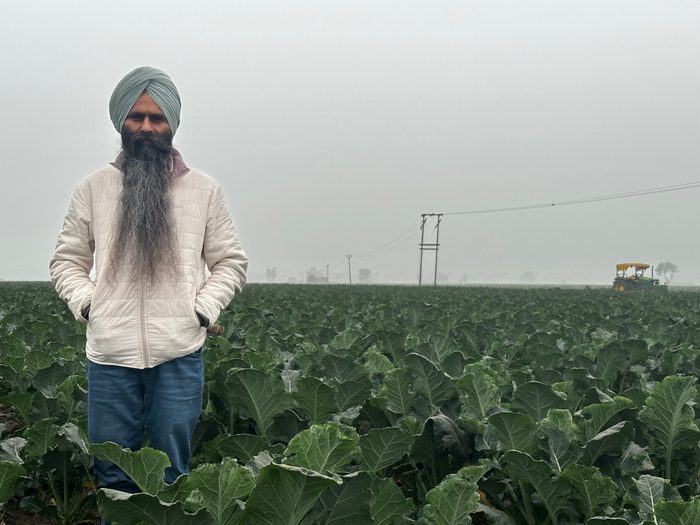
In 2022, India became the fifth leading country of origin for individuals granted asylum in the United States, with the majority of those approvals based on political opinion (51%), followed by membership in a particular social group (27%) and religion (13%).
Many Punjabi Sikhs apply for asylum on the grounds of both political and religious persecution, although compared to Indian Muslims or Christians, the latter claim is less understood by U.S. authorities — largely because the persecution of Indian Sikhs represents a fusion of their religious and political identities.
Since the farmers’ protests, however, Sikhs have been increasingly profiled by the BJP government, both online and in real life by security agencies, and amid the protests, violent calls for the “repeat of 1984” went viral. But these developments aren’t closely tracked by the sources that U.S. immigration courts tend to rely on, such as the State Department’s annual religious freedom report, which noted only two incidents of Sikhs being targeted by Hindu nationalist groups in 2022. Prior State Department reports don’t cite any incidents related to the farmers’ protests as related to Sikhs at all.
“Sikhs seeking asylum in the United States face a complicated judicial process that may not recognize the historical political and social context of their experiences,” Amrith Kaur Aakre, legal director for the North American nonprofit group the Sikh Coalition, explained in a 2021 report.
To address this lack of awareness, in 2021 the coalition released a report documenting the reasons why Sikhs are fleeing India in great numbers, with Canada seeing a nearly 300% increase in Sikh asylum claimants from 2016 to 2018.
Deepak Ahluwalia, a U.S. immigration lawyer who has advised the Sikh Coalition, said that the burden has long rested on lawyers like himself to identify incidents of anti-Sikh persecution that hadn’t been covered by mainstream media or included in official government reports. However, over the last year, it has become harder for immigration authorities to look away, as Sikh activists in Canada and the United States have faced violent attacks linked to Indian authorities.
In June 2023, pro-Khalistani activist Hardeep Singh Nijjar was assassinated outside his gurdwara in Surrey, Canada. Five months later, U.S. officials stopped another assassination plot targeting Sikh dissident and lawyer Gurpatwant Singh Pannun in New York City. India had designated both men as terrorists in 2020.
Now, says Ahluwalia, “The judges are citing these [news stories] at the end of their orders when they’re rendering the decision. They say that not only is there evidence [of persecution] in India, there’s evidence abroad. The judges are now connecting the dots, finally.”
Some gatekeepers within the immigration system have expressed doubts over asylum seekers’ claims of political persecution on the grounds of supporting Sikh sovereignty movements. “None of them hold important positions in the [Sikh separatist] party,” said Monika Sud Devaraj, a Phoenix-based attorney who was a government counsel in immigration courts for a decade. “They don’t have an explanation for why they were attacked, or how their life was in imminent danger, or why can’t the party leadership help them out.”
But Sukhwinder Singh says that he was persecuted for relatively minimal participation in separatist party activities. “I used to spend my weekends in Amritsar and Ludhiana arranging meetings for volunteer sign-ups and other party activities to help strengthen the organization,” he said. “This is how I came into the spotlight.”
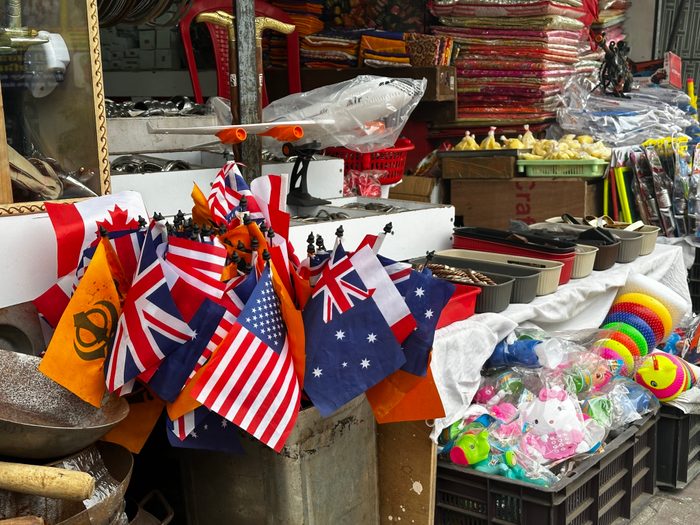
Satnam Singh, an activist from Punjab’s Rupnagar district who was active in the farmer protests, said that many activists came under heat as soon as they started raising their voices and organizing their neighbors. “What have we done? We have talked about our rights,” he said. “If we speak out, we are labeled Khalistani.”
“The State is trying to intimidate us,” he added, “but Sikhs will not back down.”
And the political persecution comes in the midst of a number of interrelated crises, he added. “The water levels have dropped in many places because of paddy cultivation, but the government incentivizes it by fixing higher rates for paddy,” he said. “Meanwhile, farmers have not been able to sell their sugarcane crops for three years.” All of these things — the growing unsustainability of farming due to climate change, oppressive government regulations, scarce jobs and political persecution — he said, are “driving people from farming to the dunki route.”
He himself is ready to go, he said, but his passport has been seized by the court and he doesn’t have the funds right now.
As of early 2024, according to data from Syracuse University’s open records nonprofit Transactional Records Access Clearinghouse, asylum applications for Indians face among the steepest backlogs in U.S. immigration courts, with an average waiting time of 3.7 years from filing to court hearing.
Michael Knowles, an asylum officer and President of the American Federation of Government Employees Local 1924, criticized the tendency to dismiss asylum seekers as merely “economic migrants.”
“There’s at least 100 million refugees and displaced persons globally,” said Knowles. “That’s not because they want to come to America. It’s because their house was on fire or underwater, and they had to get the hell out.”
“The U.S. has been a leader in refugee protection and asylum protection for decades,” Knowles continued. “And it needs to continue to do so, because when other countries see us engaging in wholesale deportation and detention and building walls, why shouldn’t every other country do the same?”
Despite his criticism of the Biden administration for creating roadblocks in the asylum process, Knowles praised its efforts to create more lawful pathways for refugees from countries like Cuba, Venezuela, Nicaragua and Haiti. However, he said, other countries face the same need.
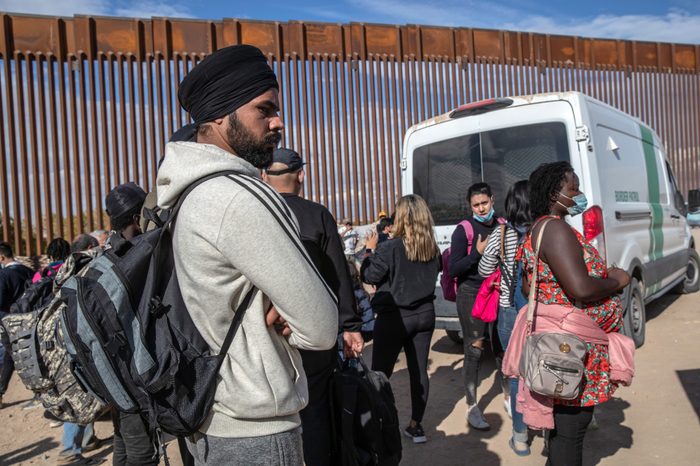
Instead, amid a contentious election of his own, in which immigration has been a top issue, in early June Biden invoked the Immigration and Nationality Act in announcing immediate restrictions on the asylum process, barring migrants from being granted asylum if officials declare the Southern border is overwhelmed. These new restrictions could disproportionately impact migrants from India, particularly since the U.S. government has not even designated it as a “country of concern” — a status that eases the asylum application process and which the U.S. Commission for International Religious Freedom has recommended for India.
In June, Modi was reelected for a third term in an election that can hardly be deemed “free” or “fair” and where voter suppression in Muslim constituencies was rampant. And while his party lost a substantial number of seats — and thus its longstanding majority control of the government — neither Modi nor the BJP have been held accountable for their persecution of multiple minority groups. Nor would the United States — which considers India a crucial ally against the expansionist influence of China — say much now that Modi has once again won.
Given these circumstances, Sukhwinder Singh was, in a perverse way, lucky. He’d crossed the U.S.-Mexico border in January 2023, when emergency pandemic restrictions invoked by Donald Trump in 2020 to turn away asylum seekers en masse were still in effect. But due to his urgent medical condition, Singh was granted an exception to the order to receive treatment on humanitarian grounds.
“Look at me. I managed to get out of India with relative ease, but then this happened,” Singh said, looking at his body. For weeks, he lay in his hospital bed, barely able to speak. He smiled only when his brother sent a message on WhatsApp saying, “I love you,” and when he got his first taste of Indian food — aloo paratha, a flatbread stuffed with potatoes — since arriving.
Singh had hoped to live free of police harassment and political persecution in America, but paid a very high price to achieve that. Since we last met, he’s had to learn a hard lesson about life in the United States.
After he was discharged from the hospital in March 2023, he lived for a year with a friend in California who had funded his journey, in hopes that Singh would come and work full time in his transportation business. But in time, Singh said he came to feel that, after his disability, his friend viewed him as a burden. This March he moved out — spending a night in a county hospital, and then being referred to a homeless shelter run by the Salvation Army, where he has lived for the past six months.
Also in March, he applied for asylum through an immigration lawyer another Indian friend recommended. As he awaits an appointment with the USCIS — in worried anticipation that his case could go south if Trump returns to power this November — Singh’s political associates back home have gone underground after one was arrested by the police. He said that none were willing to speak to a reporter, even off the record, for fear of government retaliation. And for the same reasons, he knows he won’t be the last person to make this dangerous journey.
“This will keep going on until America shuts down its border,” Singh said. “Even then, people will keep coming if it’s not safe back home.”
Makepeace Sitlhou is an independent journalist and producer based in India. She was a Fulbright fellow at the Walter Cronkite School of Journalism, Arizona State University in 2022-23.
